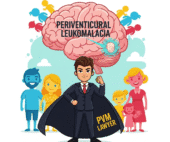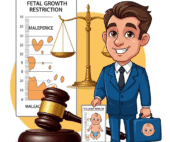The arrival of a newborn is meant to be a moment of pure joy, but for too many families, it’s overshadowed by the devastating diagnosis of a birth injury like Hypoxic-Ischemic Encephalopathy (HIE). HIE, a form of brain damage caused by oxygen deprivation, can lead to severe, lifelong disabilities. If your child has been diagnosed with HIE, you’re likely facing immense challenges and questions. Knowing the causes, symptoms, and legal options is crucial. At CPFamilyHelp.com, our dedicated HIE birth injury lawyers are here to provide the compassionate and aggressive representation you need to fight for the justice and compensation your family deserves.
What is Hypoxic-Ischemic Encephalopathy (HIE)?
Hypoxic-Ischemic Encephalopathy (HIE) is a type of brain injury in newborns that results from a lack of oxygen (hypoxia) and/or reduced blood flow (ischemia) to the brain. This deprivation can cause brain cells to be damaged or die, leading to significant neurological impairments. The severity of HIE depends on how long and how completely the brain was deprived of oxygen, and it’s classified into mild, moderate, and severe stages using systems like the Sarnat scale. For families facing this diagnosis, connecting with experienced HIE birth injury lawyers is often a critical next step.
Common Causes of HIE Birth Injuries
While some instances of HIE may have unavoidable medical origins, a significant number of cases are directly linked to preventable medical negligence during pregnancy, labor, or delivery. Our HIE birth injury lawyers specialize in identifying these instances of medical error.
- Umbilical Cord Complications:
- Cause: Issues such as a prolapsed cord (when the cord exits before the baby), a nuchal cord (wrapped around the baby’s neck), a true knot, or severe compression can cut off or reduce the oxygen supply.
- Relation to Negligence: Failure to properly monitor fetal distress signals that indicate cord issues, or delayed intervention (like an emergency C-section) to relieve compression.
- Placental Abnormalities:
- Cause: Conditions like placental abruption (premature detachment of the placenta) or placenta previa (placenta covering the cervix) can disrupt oxygen and nutrient flow to the baby.
- Relation to Negligence: Delayed diagnosis or mismanagement of these high-risk conditions by medical staff.
- Uterine Rupture:
- Cause: A tear in the uterine wall, often at the site of a previous C-section scar, which can lead to severe bleeding and rapid oxygen loss for the baby.
- Relation to Negligence: Failure to recognize risk factors for uterine rupture or delayed emergency response when it occurs.
- Maternal Health Issues:
- Cause: Conditions like severe maternal low blood pressure (hypotension), pre-eclampsia/eclampsia, or uncontrolled maternal infections can impact blood flow and oxygen to the fetus.
- Relation to Negligence: Inadequate monitoring or improper management of the mother’s health during pregnancy or labor.
- Issues During Labor and Delivery:
- Cause: Prolonged or obstructed labor, excessive uterine contractions (often from overuse of labor-inducing drugs like Pitocin), or difficult deliveries (e.g., shoulder dystocia) can lead to fetal distress and oxygen deprivation.
- Relation to Negligence: Failure to timely perform an emergency C-section when fetal distress is evident, improper use of delivery tools (forceps, vacuum extractors), or inadequate monitoring of the baby’s oxygen levels during labor.
In many of these scenarios, diligent medical care could have prevented or significantly mitigated HIE. This is why connecting with HIE birth injury lawyers is so important.
Recognizing Symptoms of HIE in Newborns
Symptoms of HIE can range from subtle to severe and may not always be immediately obvious. Early recognition and prompt treatment are critical for improving outcomes. If you observe any of these signs, seeking immediate medical attention and then consulting with HIE birth injury lawyers should be considered.
Common symptoms can include:
- Apgar Score Below 7: Especially at 5 or 10 minutes after birth, this is a key indicator of potential oxygen deprivation.
- Seizures: Often occurring within the first 24-48 hours.
- Abnormal Muscle Tone: Babies may appear floppy (hypotonia) or unusually stiff (hypertonia).
- Depressed or Exaggerated Reflexes: Such as weak sucking, rooting, or grasping reflexes.
- Altered Consciousness: Lethargy, excessive sleepiness, irritability, or an unresponsive state.
- Breathing Difficulties: Needing resuscitation at birth, abnormal breathing patterns, or requiring ventilator support.
- Feeding Problems: Difficulty latching, sucking, or swallowing.
- Organ Dysfunction: Signs of damage to other organs like the heart, kidneys, or liver, as HIE can affect the entire body.
Long-Term Impacts and the Need for HIE Birth Injury Lawyers
The long-term effects of HIE vary greatly depending on the severity and duration of oxygen deprivation. Even mild HIE can have lasting consequences. For severe cases, the impacts are often profound, necessitating lifelong specialized care. This is precisely why obtaining comprehensive compensation with the help of HIE birth injury lawyers is so vital.
Common long-term conditions linked to HIE include:
- Cerebral Palsy (CP): A group of disorders affecting movement, muscle tone, or posture due to brain damage. HIE is a leading cause of CP.
- Developmental Delays: Slower progression in motor skills, speech, language, and cognitive abilities.
- Intellectual Disabilities: Varying degrees of cognitive impairment.
- Epilepsy/Seizure Disorders: Ongoing seizure activity.
- Vision and Hearing Impairments: Due to damage to the brain areas that process sensory information.
- Behavioral and Emotional Disorders: Including ADHD, anxiety, or difficulties with emotional regulation.
- Learning Disabilities: Specific challenges in academic areas.
Managing these conditions requires extensive medical care, therapies (physical, occupational, speech), specialized equipment, home modifications, and potentially lifelong attendant care. The financial burden can be overwhelming, making the pursuit of justice with experienced HIE birth injury lawyers absolutely essential.
How Our HIE Birth Injury Lawyers Can Help Your Family
If your child’s HIE was caused by medical negligence, you have the right to pursue a birth injury lawsuit. This legal action can secure the financial compensation your family needs for current and future medical expenses, therapeutic interventions, and all other costs associated with your child’s condition. Our team at CPFamilyHelp.com specializes in HIE cases and offers expert HIE birth injury lawyers who understand the complexities involved.
We will:
- Thoroughly Investigate Your Case: Our HIE birth injury lawyers will meticulously examine all prenatal, labor, delivery, and postnatal medical records. We look for crucial evidence of negligence, such as missed signs of fetal distress, delayed interventions, improper medical procedures, or failure to initiate timely cooling therapy.
- Consult with Leading Medical Experts: We collaborate with a network of top-tier medical specialists, including neonatologists, neurologists, obstetricians, and life care planners. Their expert testimony is vital to establish the link between the negligence and your child’s HIE, and to precisely quantify the extensive future costs of care for Life Care Planning Birth Injury. This expert collaboration is a hallmark of effective HIE birth injury lawyers.
- Navigate Complex Legal Procedures: HIE lawsuits are legally intricate. Our HIE birth injury lawyers possess deep knowledge of the specific legal requirements and procedures, including the critical statute of limitations for birth injury claims in your jurisdiction. Timely action is paramount.
- Fight for Maximum Compensation: We strive to secure comprehensive compensation that covers all aspects of your child’s needs, including:
- Past and future medical expenses (surgeries, medications, ongoing therapies).
- Rehabilitation costs (physical, occupational, speech, and behavioral therapies).
- Adaptive equipment, assistive technologies, and necessary home modifications.
- Loss of your child’s future earning capacity.
- Pain, suffering, and emotional distress for both your child and your family.
- The costs associated with lifelong case management and care coordination.
Our mission is to empower your family with the resources needed to provide your child with the highest quality of life and care possible. When you need steadfast HIE birth injury lawyers, remember CPFamilyHelp.com.
Most Frequently Asked Questions (FAQ) about HIE and Legal Action
Is HIE always caused by medical negligence?
No. While many HIE cases result from negligence, some can occur due to unavoidable complications. However, a significant percentage are preventable. A thorough investigation by HIE birth injury lawyers can determine if negligence played a role.
What is therapeutic hypothermia for HIE, and how does it relate to legal claims?
Therapeutic hypothermia (or cooling therapy) is a critical treatment for moderate to severe HIE that involves cooling the baby’s body to a lower temperature for 72 hours, then slowly rewarming them. If administered within a narrow time window (typically 6 hours after birth), it can significantly minimize brain damage. Failure to provide timely and appropriate cooling therapy when indicated is a strong basis for a medical malpractice claim, and your HIE birth injury lawyers will investigate this diligently.
Can HIE lead to Cerebral Palsy?
Yes, HIE is one of the most common causes of Cerebral Palsy. The brain damage from oxygen deprivation can impair the parts of the brain that control movement and coordination. Early intervention and aggressive therapy are crucial.
How do I prove medical negligence in an HIE case?
Proving negligence requires detailed medical records, expert medical testimony, and a clear demonstration that the medical professional’s actions (or inactions) fell below the accepted standard of care, directly leading to your child’s HIE. This complex process is best handled by experienced HIE birth injury lawyers.
What kind of compensation can a family expect in an HIE lawsuit?
Compensation for HIE lawsuits can be substantial, often in the multi-million dollar range, especially in cases of severe, lifelong disability. It aims to cover past and future medical care, therapies, adaptive equipment, lost earning capacity, pain and suffering, and other related costs for the child’s entire life. Your HIE birth injury lawyers will work to maximize this compensation.
If you suspect your child’s HIE was preventable and you would like to discuss your possible legal action, call our professional HIE birth injury lawyers at CPFamilyHelp.com today for a free consultation. We will be happy to help you fight for justice.




